“I had no idea Resolver offered so much.”
That comment from an attendee at our recent Ascend GRC Toronto event stuck with me. As the new Head of Sales at Resolver, it captured what I kept hearing all day: GRC teams are doing the hard work — they just need tools that make it easier to execute, scale, and report with confidence.
This event was my first with Resolver, and I spent most of it listening. I spoke with leaders across industries, all facing growing pressure: more testing, tighter timelines, and constant regulatory shifts — without added time or resources.
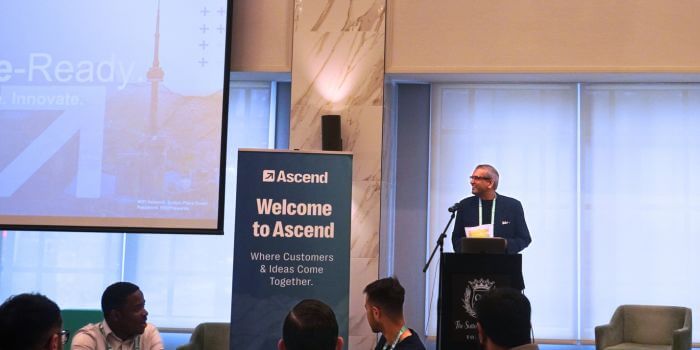
Despite those realities, the tone of the day wasn’t frustration. It was focused optimism. Teams came ready to share what’s working, flag what’s slowing them down, and find practical ways to move forward to build enterprise resilience and drive growth in their companies.
If you’re in a governance, risk, or compliance role, you’ll likely recognize the same patterns in your own day-to-day. I wanted to share what I heard in my “GRC Day” conversations, insights that might be helpful as you tackle similar challenges in your organizations. Here are five themes that came up again and again, insights you might be able to bring back to your own team.
1. AI in GRC is moving from hype to practical wins
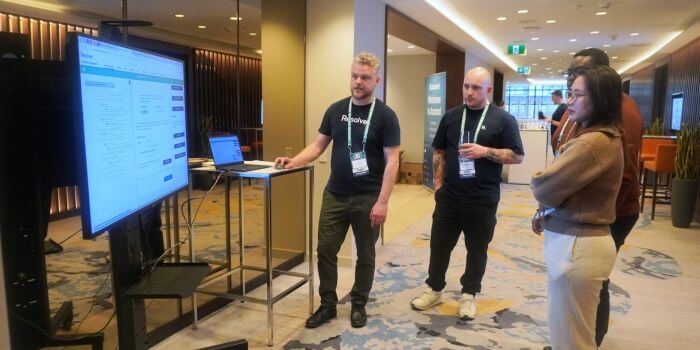
AI isn’t just a buzzword anymore, but risk and compliance leaders aren’t rushing in without careful consideration. They’re thinking about where artificial intelligence and automation can add value, without increasing complexity or risk.
What stood out to me is how measured the interest is. People are curious, but cautious. They’re starting with narrow use cases — like transcription, regulatory summarization, or control generation — and looking for signs of real efficiency before they scale.
What I heard: teams want to save time without sacrificing quality. They’re focused on bringing leadership along, with a clear understanding that AI isn’t there to replace professional judgment. AI innovation is meant to enhance how teams perform and provide greater confidence in their ability to meet objectives.
Resolver’s approach aligns with that mindset. We’re integrating AI into workflows teams already trust — never as a bolt-on, and never without guardrails. As our VP of Product Amanda Cohen shared our roadmap, the excitement was clear: AI isn’t a future concept anymore — it’s becoming part of how compliance gets done.
2. Responsible AI starts with good governance
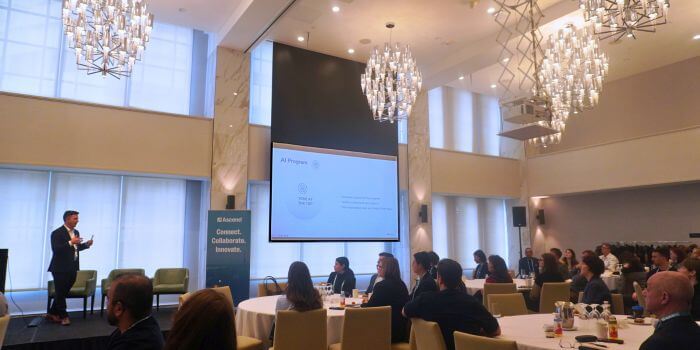
At Ascend, one theme came through clearly in our keynote delivered by Dan Rice from Kroll: successful AI adoption depends on getting the process right. Teams aren’t just testing features — they’re thinking about how to govern AI use across risk, compliance, and audit. Good governance, with policies that define accountability, transparency, and validation, is what makes innovation sustainable.
This matters across every application Resolver supports — from risk scoring to issue management to control generation. Teams want confidence that decisions made with AI are explainable, auditable, and aligned with their existing frameworks. Resolver helps teams with AI-enabled features that enhance structured processes, so organizations can scale new capabilities without increasing risk.
3. Standardization matters, but flexibility is what makes it effective
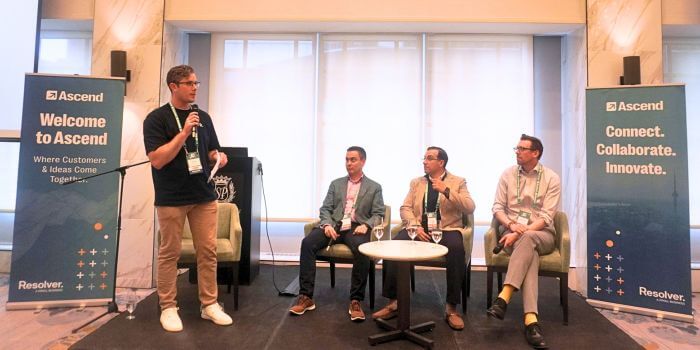
Everyone’s aiming for standardization — but few have the luxury of starting from a blank slate.
Most organizations are working across global frameworks, regional policies, and business units with different maturity levels. Trying to force one structure across all of that creates more problems than it solves.
What leaders told me they need is a shared foundation that allows for flexibility. They need processes and tools that support consistency without creating new bottlenecks.
That’s where Resolver’s configurability becomes a real differentiator. Our out-of-the-box platform is built on best practices, but it gives teams the ability to tailor processes to how they already work. And when needed, our Services team is there to help guide that rollout.
4. You don’t need more tools, but centralized data is your GRC superpower
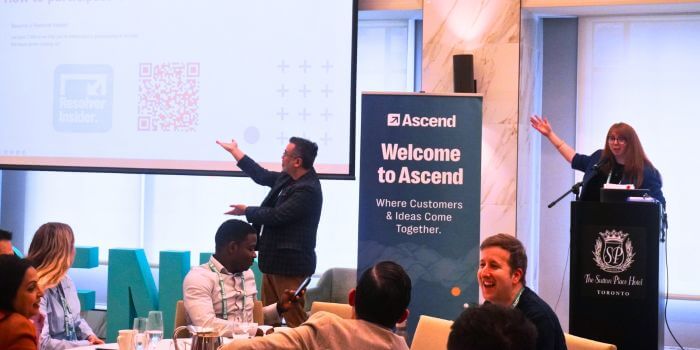
Visibility came up in every single conversation. Not just access to data, but confidence in what they’re seeing.
The problem isn’t a lack of tools. It’s the friction between legacy or disconnected solutions. People are switching systems, duplicating inputs, and manually stitching together reports to get a full picture. That creates confusion, when what teams want to drive is strategic insight.
What our GRC community told me they want is one place to see the full story — risks, controls, policies, testing progress, and regulatory obligations — filtered by business line or region.
Resolver helps consolidate that view. We bring your GRC data together without forcing a full rework of your program. That clarity builds confidence at the leadership level and helps teams focus on execution and strategy instead of time spent chasing information.
5. Peer connections empower GRC progress and innovation.
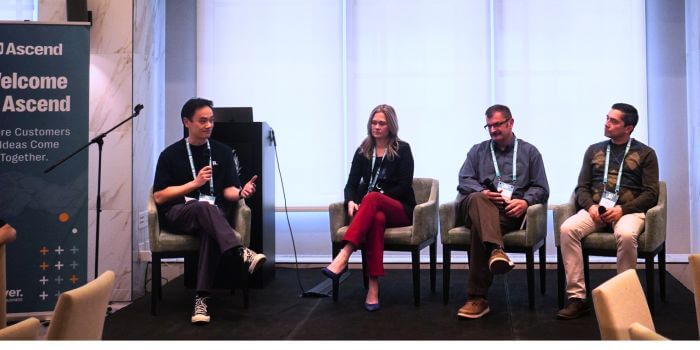
The most energizing part of the day was the openness. People didn’t just come to listen — they came to learn from one another.
Leaders shared stories about policy challenges, resource constraints, internal buy-in, and tech fatigue. One customer even said they didn’t realize how much Resolver already handled until they saw it in action.
There’s a real appetite for practical solutions, be they integrations that save time, content libraries that reduce duplication, or flexible tools that make program delivery easier across the org.
What I took away as a sales leader was simple: GRC teams aren’t looking to overhaul everything. They’re looking for tools that support how they already work, give them clarity, and reduce the noise.
Discover Resolver's solutions.
Post Ascend GRC Toronto: Looking ahead at what’s next
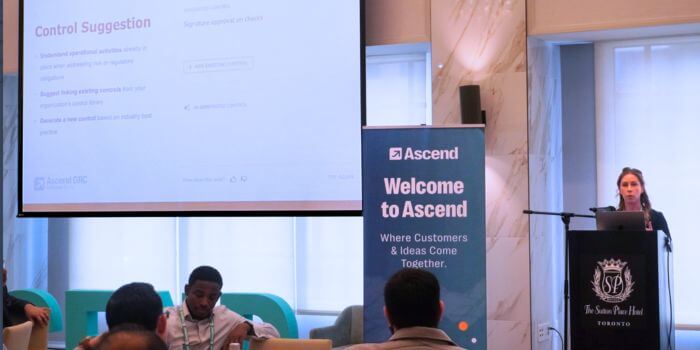
Ascend GRC Toronto was a reminder of what’s possible when the right people are in the room — industry leaders who are clear-eyed, collaborative, and committed to building stronger programs.
To our customers: thank you. You made this event what it was.
And to any GRC team looking for a smarter way to manage risk, streamline testing, and reduce the burden on your team — we’d love to show you how Resolver can help.
Let’s talk.
About the author: Joe Randle is Head of Sales at Resolver, where he helps organizations across industries find solutions to manage risk, drive accountability, and make better decisions. With over two decades of experience in enterprise software, Joe brings a practical, customer-first approach to solving complex operational challenges. He believes great software should make people’s jobs easier—and that the best ideas come from listening first.

